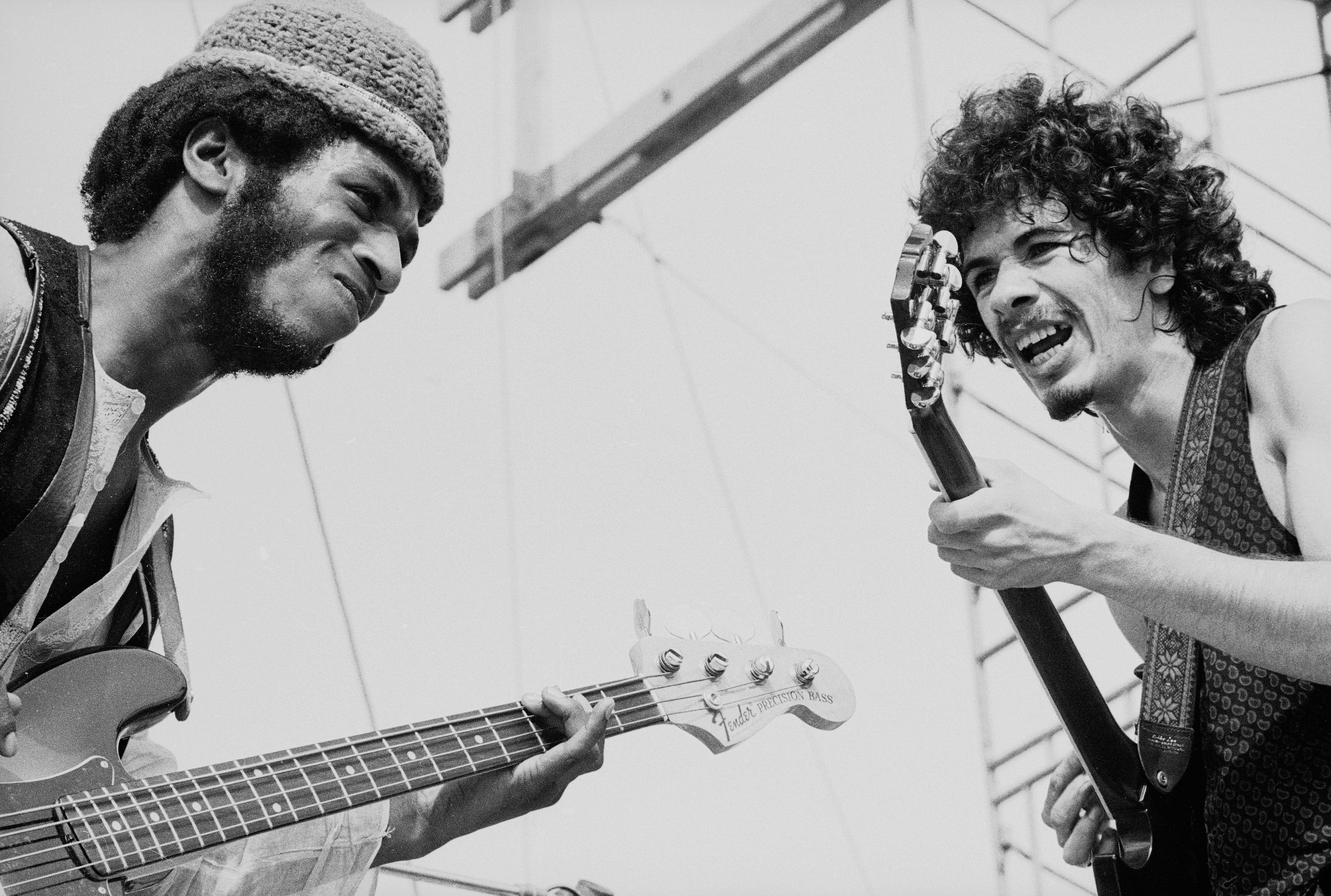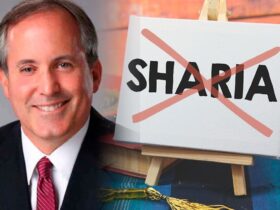Your support helps us to tell the story
From reproductive rights to climate change to Big Tech, The Independent is on the ground when the story is developing. Whether it’s investigating the financials of Elon Musk’s pro-Trump PAC or producing our latest documentary, ‘The A Word’, which shines a light on the American women fighting for reproductive rights, we know how important it is to parse out the facts from the messaging.
At such a critical moment in US history, we need reporters on the ground. Your donation allows us to keep sending journalists to speak to both sides of the story.
The Independent is trusted by Americans across the entire political spectrum. And unlike many other quality news outlets, we choose not to lock Americans out of our reporting and analysis with paywalls. We believe quality journalism should be available to everyone, paid for by those who can afford it.
Your support makes all the difference.
By his own admission, Carlos Santana has led a charmed life. In 1999, he walked into the studio to record “Smooth” only to find that a team of two dozen people had already figured out the bridge, the chorus and the verses. The song became an international smash hit, winning multiple Grammys and catapulting the virtuoso guitarist back to the top of the pop charts three decades into his career. “All I had to do was just close my eyes and play my guitar,” recalls the 77-year-old contentedly. “I’m happy to say that it’s been like that with my life since I can remember. I just show up, the great spirit orchestrates the scenario, and all of a sudden Carlos Santana looks and sounds really, really good!”
Today he’s at home at his $20m, 8,000 sq ft retreat overlooking Hanalei Bay on the Hawaiian island of Kauai. I can’t attest to how he’s looking, but the great spirit certainly has Santana sounding pretty well. When I ask over the phone how he’s doing, he purrs: “I’m grateful, how are you?” Well, you would be, wouldn’t you? “Everybody wants to go to heaven, but nobody wants to die,” he tells me when I ask, redundantly, what attracted him to life in Hawaii. “When you’re in Kauai, you’re in heaven and you’re more alive than ever.”
Santana is fond of these sorts of metaphysical allusions. He speaks much like he plays guitar, never more than a few moments away from drifting off to some distant cosmic plane. His habit of talking in abstract platitudes is entertaining if occasionally frustrating. Attempting to pin him down to a firm answer can feel like trying to drive a nail through a sunbeam.
Yet while Santana may project the easy, insouciant air of a hippie mystic, not everything in his world is always breezy. Earlier this year, he took a “hard fall” while ambling around on the island and broke a finger on his left hand, forcing him to postpone a string of dates for an upcoming residency in Las Vegas. It’s the sort of injury a guitar player might lose sleep over, but he’s unruffled. “Thank you for asking, my finger is recuperating really well,” he says when I bring it up. “I lost my equilibrium and fell. I put my hand out to block the shock and broke my baby finger, but they operated and put it back in place. One or two more weeks and I’ll be good as new.”
Clearly, it will take more than putting his little finger out of joint to trouble Santana, widely regarded as one of the greatest to ever pick up a guitar; in 2023, Rolling Stone named him the 11th greatest guitarist of all time. He’s expecting to resume shows in the US in April, ahead of a summer European tour that arrives in the UK in June. He also has a new album, Sentient, that showcases various collaborations he’s recorded over the decades featuring icons including Miles Davis, Smokey Robinson and Michael Jackson.
Several of the songs have been released before on other people’s records, but Santana wanted to have them all in one place. “When I go to the beautiful hotels in Europe, in the lobby there’s always an incredible arrangement of flowers,” he explains, never one to miss the opportunity for an elaborate metaphor. “They hire someone just to arrange the colours and the flowers and the textures. That’s how I approached my album. I wanted to create the right amount of colours, moods and purpose.”
One track he’s never put out before is his bewitching instrumental cover of Jackson’s ballad “Stranger in Moscow”, recorded live in 2007. That flows straight into “Whatever Happens”, his collaboration with the late King of Pop from Jackson’s 2001 album Invincible. The juxtaposition of the two songs means that when Jackson’s voice finally arrives, it sounds like an act of resurrection. Santana is a staunch defender of Jackson. In his 2014 memoir, he opened up about the harrowing childhood sexual abuse he himself had suffered between the ages of 10 and 12 at the hands of an American tourist who showered him with gifts. He says he doesn’t believe Jackson was guilty of the similar crimes he’s been accused of. “The hostile forces on this planet have an agenda, and that’s to destroy your light,” he says. “Michael Jackson did a lot of great things with his money for children, and the hostile forces didn’t like it.”
What exactly are these shadowy forces? “The hostile forces are Satan, Lucifer and the Devil,” Santana explains, matter-of-factly. “Santana is a threat, and Michael Jackson is a threat to darkness, because we bring so much light that other people believe they’re also worthy to share their own light. That’s really what it’s about.” If this all sounds a little out there, Santana assures me it’s serious business. “This is not wishful thinking, goody-two-shoes energy,” he says. “This is what Miles Davis calls ‘motherf***er energy.’”
Santana’s two posthumous collaborations with the trumpet maestro, the Latin groove “Get On” and the soulful “Rastafario”, provide some of the best moments on the new record. Santana added his guitar parts in 1996, several years after Davis, who died in 1991, had recorded his with the Italian jazz-rock composer Paolo Rustichelli. Once again there’s a sense of communing with the dead, the pair’s signature instruments speaking to each other across the great divide.
Enjoy unlimited access to 100 million ad-free songs and podcasts with Amazon Music
Sign up now for a 30-day free trial
Enjoy unlimited access to 100 million ad-free songs and podcasts with Amazon Music
Sign up now for a 30-day free trial
Santana and Davis were close for decades, first meeting when the guitarist invited the jazz musician to support his band at Tanglewood in 1970. They stayed in touch, Davis often calling Santana late in the night to discuss music and life in general. “I felt like a student all the time,” Santana remembers. “I’m grateful that he trusted me.” Despite their friendship, they never recorded together. Their respective sessions with Rustichelli may be the closest they ever came to sharing a studio, but Santana isn’t about to let a little thing like Davis being dead for several years put a damper on their collaboration. “I think he’s at that level of Stravinsky, Da Vinci, Pablo Picasso,” says Santana. “The real geniuses have a way of stopping time so that in one instant you can feel infinity. When you hang around Miles you don’t need a Rolex watch, because the time is always now. The straight people used to say: ‘Life is short.’ The hippies said: ‘But wide.’ It was like that with Miles.”
Santana was part of the first wave of hippies to emerge from San Francisco in the mid-Sixties, but before that, he was a small boy growing up in the southwestern Mexican city of Autlán de Navarro in awe of his violinist father. José Santana could play elegant Latin music, such as the work of composers like Carlos Jobim and Agustín Lara, whom Santana compares to Cole Porter, but he mainly played in mariachi bands in order to feed his seven children. “He had to play mariachi music because that’s what American tourists wanted to hear,” explains Santana dismissively. “‘Ay-ay-ay.’ Piñata music, you know?”
In 1954, when Santana was seven, his family moved to Tijuana where his father could find more work. Santana picked up the violin too, and got his start playing underage in bars and strip joints. Life in the bustling border city exposed him to the music of the Caribbean, African rhythms and salsa, all of which wound its way into his playing and would later distinguish him from guitarists who only studied the blues. The most important lessons, though, came from his father. “What I learned from him was the same thing that Clark Gable had: charisma,” he says. “Women went bananas over him, especially when he played the violin and sang. My father had women eating out of his hand.”
A few years later, Santana’s family moved north again to San Francisco. Today, families crossing the border looking for work are being targeted by an immigration crackdown instigated by the Trump administration, of which Santana is no fan. “There’s only one family on this planet, but part of our family is invested emotionally in fear,” he says. Yet he counsels against lending politicians too much significance. “It’s an illusion. Donald Trump is just fog. There is fog in San Francisco, and fog in London, but let me remind people: fog always disappears by two o’clock in the afternoon because the sun burns it away. Don’t let fog scare you, because the sun is always shining.”
.jpg)
As bad as things might get, he believes there’s always something to be learnt from any situation. “To me, Donald Trump has come here to teach us a lesson,” he argues. “What can Donald Trump do to change people to believe more in love than greed or fear or superiority? Hopefully, we learn something from Donald Trump about how to become better human beings.”
When Santana arrived in San Francisco, he found himself at the heart of a revolutionary era. By forming the Santana Blues Band in 1966, he was staking his claim to be part of it. “If you went to somebody’s house in San Francisco, they were playing Ravi Shankar, The Doors, Creedence Clearwater, Sly Stone, the Grateful Dead,” he remembers. “I said: ‘Pretty soon they’re going to be listening to Santana too!’ Being in San Francisco was like an explosion of consciousness. Not just taking mescaline or ayahuasca or LSD. That was part of it, but something happened in San Francisco with the Black Panthers and Otis Redding and Jimi Hendrix.”
He credits Bill Graham, the legendary rock impresario and promoter who booked shows at the city’s Fillmore venue, with broadening the musical scene. “The Fillmore was my university,” he says, recalling performances of cosmic jazz by Sun Ra, the Latin percussion of Willie Bobo and the country songs of Buck Owens. “Because of Bill Graham, we hippies learned to expand our vocabulary.”
It was Graham who arranged for Santana to appear at Woodstock in 1969. The guitarist was given a dose of mescaline by Jerry Garcia shortly before taking the stage and hallucinated that his instrument had transformed into a sort of electric snake that he had to wrestle to tame, but that only added to the intensity of his performance. After his band’s 11-minute instrumental “Soul Sacrifice” was included in the festival’s film and album, they shot to fame around the world. “To me, Woodstock was like watching Jesus on the mountain giving out gluten-free bread and mercury-free fish,” jokes Santana. “We shared everything.”

A few months later, Santana was one of the opening acts at Altamont, the infamous free Rolling Stones concert in California that ended in tragedy when a fan was killed by Hell’s Angels who’d been hired to provide security. Cultural historians have often cited it as the moment wide-eyed hippie optimism came crashing down to bloody reality, but Santana doesn’t see it that way. “The hippie movement will never die, as long as someone cares to share flowers, kindness, consideration or compassion,” he says. “What happened in Altamont was a lack of professionalism. They should have hired security with a different kind of authority. That concert doesn’t define the end of hippies. That idea came from the square people, who hated the hippies to begin with.”
Clearly, though, he must have felt ready for some sort of spiritual change of speed. In 1972 Santana began following the Indian spiritual leader Sri Chinmoy, and spent a decade abiding by the guru’s strict teachings. “From ’72 to ’82, no drugs, no alcohol, very little minimal contact with females,” he recalls. “It really worked out for me. It gave me a Marine or West Point military discipline. Discipline, devotion, dedication and diet got me to a place where I can show up on stage and feel like I can take the place higher.”
He still lives by some of those teachings, even if he’s relaxed a little on others. In 2020, he launched his own cannabis brand, Mirayo, and says it’s good news that an ever-widening group of people are seeking to expand their consciousness through the use of psychedelic drugs. “It’s the first step towards self-awareness,” he says. “A lot of people in America are going to South America to visit a shaman and drink ayahuasca tea and peyote, because they want a different paradigm, a different narrative.”
Although Santana married his first wife, Deborah King, in 1973 it wasn’t until after he’d moved away from the guru’s restrictions in the mid-1980s that they had their three children, Salvador, Stella and Angelica. They divorced in 2007, and three years later Santana married his band’s drummer, Cindy Blackman. The couple collaborate on a new album track, “Coherence”, which Santana describes with an echo of his father’s seductive charisma. “It was delightful,” he says. “Anything I do with Cindy is delightful because she’s in love with me, I’m in love with her, and we just make love, you know, on stage or in the studio.”

Our time is nearly up, and I sense that for all his far-out zen wisdom, Santana is a little impatient to get back to his day. Kauai, and Cindy, are calling after all. Before we hang up, I ask how it feels to release a new album featuring so many collaborators who have already died. He tells me I’m looking at it all wrong. “First of all, there is no end of life, because energy does not die,” he tells me. “We go into another frequency. To me, death is an illusion. I’ll give you an example.”
I brace myself for one last metaphysical allegory, and Santana doesn’t disappoint. “When you’re making love and you really get into the moment, the real moment, that incredible orgasm, there’s no time in there,” he says. “It’s just infinity. I learned from the greatest musicians to enter into infinity when you’re playing music. In that moment, that instant, you’re able to become an immortal.”
He reels off a list of musical immortals: Jimi Hendrix, Bob Marley, John Coltrane. But don’t worry, he adds, the rest of us can get there as well. “You have it too, and I have it,” he says. “The only difference is that they used it. It’s just like playing tennis. You’ve got to learn how to hit the ball in the sweet spot.”
‘Sentient’ is out 28 March. His UK tour begins on 18 June
















Leave a Reply